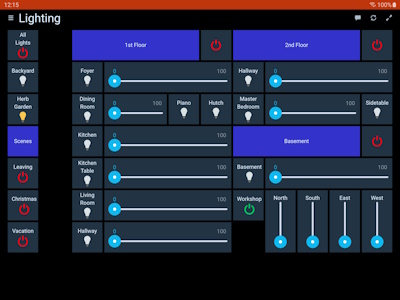There have been a few incidents over the years where my basement (cellar) has incurred water damage. The worst time was when the sump pump stopped working and the basement floor was covered by several inches of groundwater. While the basement is not a finished area, it is a recreational, work, and storage space containing furniture, electronics, tools, and more. It also houses all the major equipment that provides the home network and automation services.
The other fluid-induced cases did not cause much damage other than clean-up time, but could have been worse if the issues were not found when they were. These cases include: a time the hot water heater developed a leak, a couple of times the drainage path for the whole-house humidifier became clogged causing water to leak out of the furnace, and when the main pipe transporting sewage out of the house became restricted enough that the pressure forced some of the sewage through an access point in the basement floor.
While the only incident that caused unrepairable or uncleanable / “unsanitizeable” damage was the failure of the sump pump, that and the other “could have been much worse” incidents have made me vary paranoid about basement flooding. If water in the pit where the sump pump is located becomes too close to the top, or water starts collecting around the water heater, humidifier, or really anywhere on the basement floor, I want to immediately be alerted. That way if I am in or near the house I can go to the basement to assess the situation relativity quickly. If I am further away from the house I want to be able to get a real-time view of the basement to see if it is a false alarm or something that does not need immediate attention, or something where I need to contact a friend or family member to get someone to the house to address the problem. If things look potentially dire, I might call my insurance agent and ask for help as opposed to a potentially large claim later.
Implementing this was pretty straight-forward using Z-Wave-capable, battery-powered, water sensor devices connected to my openHAB-based home automation controller. To provide real-time visuals of the basement when away from the house, a camera was installed along with “in-house” software to manage and store recordings, and view the feed when away from the house. (By “in-house” I mean that no third-party is used to manage the cameras, or to view what they are recording or what they have recorded previously.)
The first step was to decide where water sensors should be placed. Obvious locations based on previous experiences were the sump pump pit, the area around the furnace and water heater, and any access points to pipes under the basement floor. A more comprehensive arrangement might put sensors around the entire basement perimeter as well as potential “hot zones”, (as well as other places like the laundry room and bathrooms and kitchen). For this first implementation I just went with a couple water sensors in the basement: one hanging slightly down the pit where the sump pump resides and another in the area by the furnace and water heater.
These water sensors were then connected or integrated via Z-Wave to the Home Automation Controller running the openHAB software. Each of these devices have at least a couple data channels to communicate the battery level and if the water sensor had been tripped. In openHAB I created a couple rules for each sensor that 1) sent me an email if the battery capacity was under 15%, and 2) sent me a text message on my phone if it detected water. The important alert is the water detection one which is why it sends a text message instead of an email. In that case I can then try to view the situation in person if I am in and near the house, or access the cameras in the basement to view things remotely. The low battery alert I just sent in email as even at 15% power I had a few weeks to replace the batteries and there was no need to wake me up to deal with that.
Detection, specific alerts, and real-time monitoring are all that this implementation provides; it is not a comprehensive “detect and deal with” solution. But it does give me the triggers and options to take those actions as needed. Plus the template may be extended to other areas of the house.


